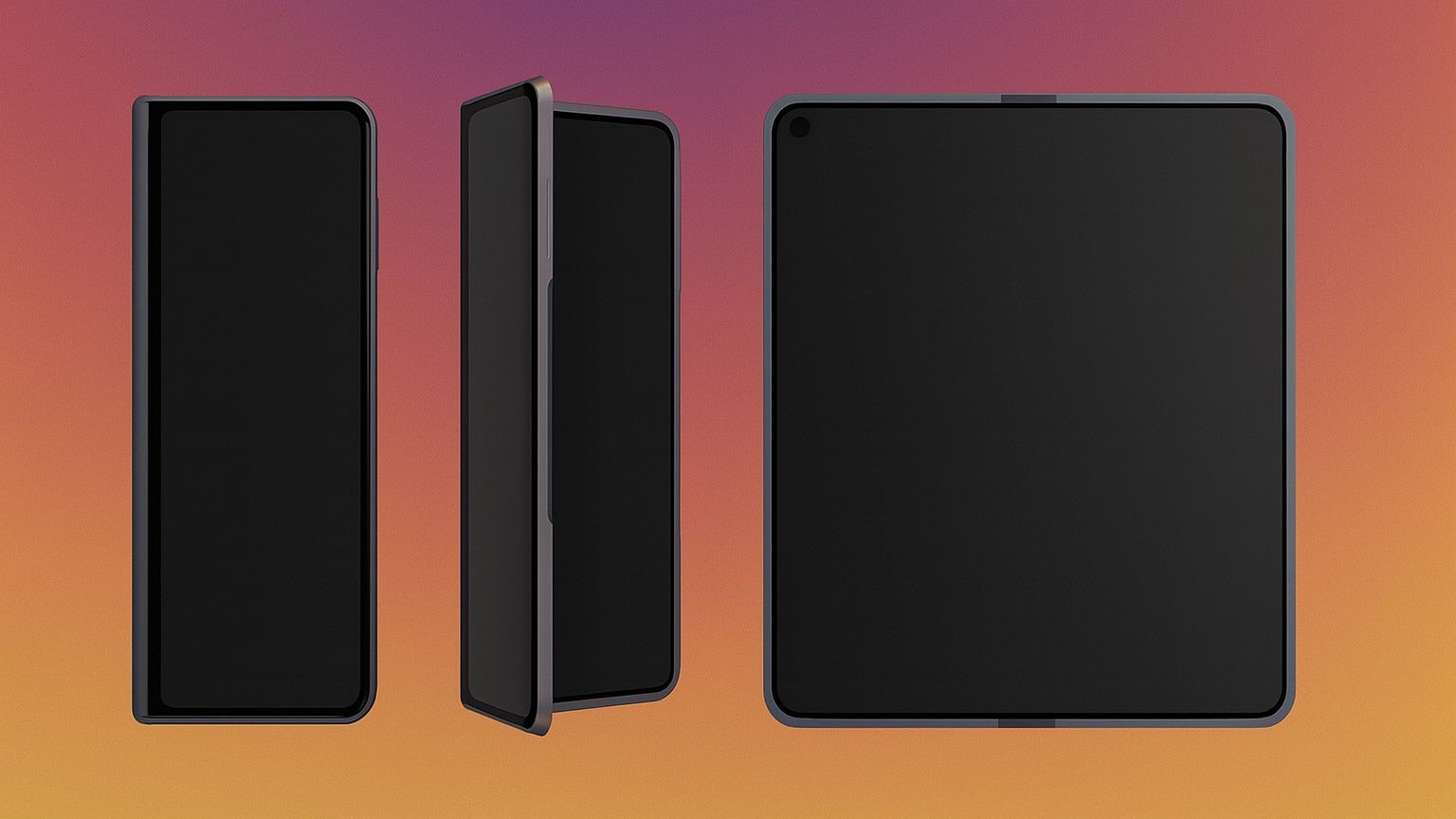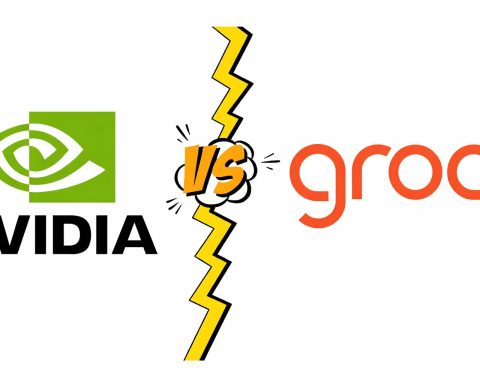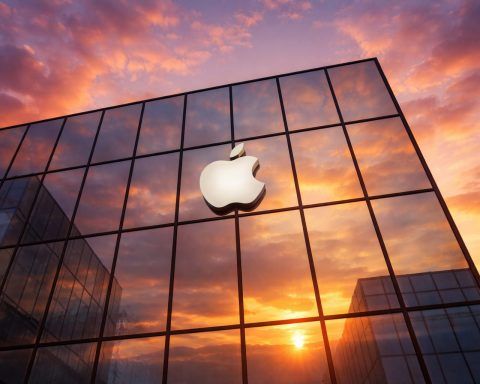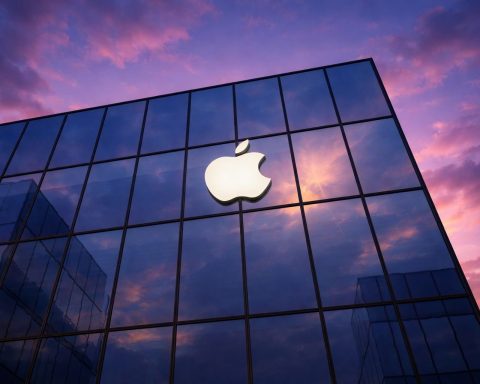Key Facts
- Apple’s Foldable iPhone on the Horizon: Apple is preparing to launch its first foldable iPhone, likely in 2026 as part of the iPhone 18 lineup [1]. A JPMorgan analysis suggests it will debut with a 7.8-inch flexible display, a $1,999 price tag, and premium features like a titanium “liquid metal” hinge and virtually no display crease [2] [3]. This would mark Apple’s entry into a foldable phone market expected to reach 19 million units in 2025 [4] [5].
- The Foldable Comeback: Once thought left in the 2000s, flip phones are making a comeback. Modern foldable smartphones with flexible screens—both flip-style clamshells and book-style folds—have reimagined the classic flip phone for the internet age. After early stumbles (Samsung’s first Galaxy Fold in 2019 suffered screen issues), major brands have now launched multiple generations of foldables [6]. Analysts say Apple’s foray into this space signals that consumers crave new designs that optimize mobile internet use [7].
- Samsung Leads, Competition Grows:Samsung pioneered the modern foldable and held ~79% of the foldable market as of 2022 [8]. Its Galaxy Z Fold (tablet-like) and Z Flip (pocket flip) series are now on their 7th generation with slimmer, lighter designs and larger screens [9] [10]. However, rivals are catching up: Google joined with the Pixel Fold in 2023 (priced ~$1,799) [11], and Huawei (along with spin-off Honor) is surging in China with devices like the Mate X series [12]. Even Motorola, Oppo, and others have rolled out foldables, heating up competition.
- Market Trends & Adoption: Foldables remain premium niche devices today – accounting for only about 1–2% of smartphones globally [13] [14] – but interest is growing. Consumers are drawn by the big-screen-in-pocket appeal for videos, gaming, and multitasking, as well as a touch of nostalgia for the flip form factor [15] [16]. High prices (often $1,000–$2,000+) and questions about durability have limited mass adoption so far [17] [18]. Industry forecasts predict rapid growth: one analysis expects foldable sales to triple to around 45–50 million units by 2027–2028, especially if Apple enters and drives demand [19] [20].
- Big Implications for Tech Design: Experts say the foldable resurgence could usher in a new era of smartphone design [21] [22]. Phones that unfold into tablets or flip shut like tiny laptops point to a future beyond the glass slab. Apple’s entry, in particular, is viewed as a potential game-changer that could legitimize foldables and spur broader adoption [23] [24]. At the same time, observers caution that success is not guaranteed – even Apple has flops (the pricey Vision Pro headset was cited as a recent example [25]). Nevertheless, with Samsung’s CEO declaring foldables “ready to become mainstream” [26] and Apple finally poised to join in, the race to redefine the smartphone is on.
From Flip to Fold: The Evolution of Phone Design
Modern “flip” smartphones like the Motorola Razr revive the clamshell design with flexible displays, marrying nostalgia with cutting-edge tech. Flip phones ruled the early 2000s – who doesn’t remember the satisfaction of snapping shut a Motorola Razr or a Nokia clamshell to end a call? Back in 2005, the flip phone was the height of mobile cool [27]. These devices were compact, fashionable, and tactile. However, the advent of the iPhone in 2007 and the rise of big touch-screen “slab” smartphones pushed flip phones to the sidelines for over a decade. Flat glass rectangles became the default design, and the nostalgic clamshell seemed like a relic of the past.
Yet today, what’s old is new again. Foldable display technology – using flexible OLED screens that can bend – has enabled a new generation of devices that fold in half. The modern twist is that these aren’t “dumbphones” for calls only, but full-fledged smartphones that transform shape. Some fold vertically like classic flips, while others fold horizontally to open into small tablets. This trend picked up speed in 2019 when Samsung introduced the original Galaxy Fold (after a false start with screen glitches). It was followed by Huawei’s Mate X, Motorola’s rebooted Razr, and others in the early 2020s. Each offered a tantalizing concept: a pocket-sized phone that could unfold to a larger screen when you need it.
Notably, a “dumbphone” revival has also unfolded alongside this. A subset of Gen Z and millennials, fatigued by constant connectivity, began embracing basic flip phones for digital detox. In fact, one report noted HMD Global (maker of Nokia phones) saw its flip-phone sales double by early 2023, buoyed by TikTok trends like #bringbackflipphones [28]. This nostalgia-fueled craze for simplicity – part of a broader “newtro” retro trend – set the cultural stage for the flip form factor’s return. However, the real momentum is coming from high-tech foldables that merge nostalgia with smartphone capabilities.
Foldable “book”-style phones, such as Samsung’s Galaxy Z Fold series, open up into tablet-like displays – offering a big screen experience in a device that still fits in your pocket. Over the past few years, foldable smartphones have rapidly evolved. Early models had durability issues (hinge bumps, screen creases and cracks) and eye-watering prices, limiting their appeal. But subsequent generations made steady improvements: stronger hinges, better protective ultra-thin glass, reduced screen creases, and lighter builds. By 2025, Samsung’s Galaxy Z Fold and Flip 7 lineup exemplified how far the tech has come – the Fold 7 is 10% lighter and 26% thinner than its predecessor [29] [30], and the Flip 7’s design is refined for everyday durability. Other manufacturers from China (Huawei, Honor, Oppo, Xiaomi, Vivo) have pushed innovations too, from Huawei’s Mate X3 (one of the slimmest, lightest folds) to Oppo’s pocketable Find N series. In short, the clamshell design has been reborn for the smartphone era, and flexible-display phones are no longer sci-fi – they’re here, and they’re getting better each year.
Apple’s Foldable iPhone: Rumors, Design and Launch Plans
The world’s most valuable tech company has been notably absent from this foldable frenzy – until now. Apple’s entry into the foldable phone market is finally on the horizon, and it’s generating enormous buzz. According to a Guardian report, Apple is working on its first-ever flip/fold iPhone as a bold new product category [31]. While Apple has kept details secret (as usual, the company hasn’t officially confirmed anything yet), leaks and analyst reports have painted a picture of what to expect.
A “Flip” or a “Fold”? Design Speculation
Little is officially known about Apple’s foldable, but industry watchers have some educated guesses. It might take one of two forms: a clamshell “iPhone Flip” resembling a classic flip phone (like Samsung’s Galaxy Z Flip), or a book-style “iPhone Fold” that opens into a mini tablet (more akin to Samsung’s Z Fold) [32]. Current rumors favor the latter – essentially an iPhone that unfolds into an iPad Mini–sized display. In fact, a JPMorgan investor note claims Apple’s first foldable iPhone will have an inward-folding 7.8-inch main screen with a 5.5-inch outer screen [33]. That inner display is said to be high-end and nearly crease-free, addressing one complaint about existing foldables [34]. The device would fold along a durable hinge reportedly made from a tough titanium alloy (“Liquid Metal”) for strength [35]. Notably, analysts speculate it could even revive Touch ID fingerprint unlocking under the display, instead of Face ID, to better suit a folding design [36].
In terms of size and function, this sounds like Apple is aiming for a pocketable iPad-style experience – a gadget that’s an iPhone when closed and a small iPad when opened. CCS Insight analyst Ben Wood believes a foldable “mini-tablet” iPhone has huge potential to “move the needle” by giving users a larger screen for watching videos, showing photos, or getting work done on the go [37]. It aligns with a broader trend: people now spend most of their online time on phones rather than laptops, so a bigger-yet-portable screen could optimize that mobile internet experience [38]. Apple appears to be betting that a foldable design is the next evolution to keep iPhone users engaged.
Launch Timing and Premium Positioning
When can you get one? Reports suggest Apple is taking its time – the foldable iPhone is expected around 2026, likely alongside the conventional iPhone 18 series [39]. (Apple’s 2025 lineup, the iPhone 17, is rumored to be relatively incremental, with the real excitement shifting to 2026’s new form factor [40].) Production might only ramp up in the second half of 2026, with a limited initial run of a few million units [41], reflecting Apple’s cautious approach to a new category.
One thing is certain: it won’t be cheap. Analysts predict roughly a $1,500–$2,000 starting price, aligning with the top end of the market [42] [43]. In fact, $1,999 has been floated as the likely base price in the U.S., which would make the foldable iPhone one of Apple’s most expensive phones ever [44] [45]. (For context, Samsung’s flagship Galaxy Z Fold 7 also starts around $1,999 [46].) That sky-high price point suggests Apple’s foldable will remain a luxury, premium product at first [47] – meant for enthusiasts and those willing to pay for the latest and greatest. It may take a few generations (and competition-driven price drops) before foldable iPhones trickle down to mainstream affordability.
Why has Apple waited so long? It’s partly strategic. Apple has a history of letting rivals experiment with new technology first, then swooping in to do it “right.” As Ben Wood notes, “Apple is rarely first to anything” – the company prefers to observe what works (and what doesn’t) in the market, then refine the idea and deliver a polished, reliable version [48]. We saw this playbook with MP3 players (iPod wasn’t the first, but it dominated), smartphones (Apple waited to perfect the iPhone), and tablets (iPad arrived well after Microsoft’s early tablets). With foldables, Samsung, Huawei and others have ironed out many kinks over several generations. Now Apple can leverage improved screen tech and hinges to avoid the fiascos of creaky early foldables. “Apple…likes to take its time, see how it can refine and optimise it, and deliver the best experience, then it jumps,” Wood explains [49].
Another reason is that the smartphone market has plateaued. People are holding onto phones longer, and innovation has felt incremental – thinner bezels, better cameras, but nothing radically new. “The smartphone has become a boring category – essential in daily life, but no longer the next big thing,” says Wood [50]. Apple is under pressure to spark excitement (and upgrade sales) again. A flashy new form factor – one that literally changes shape – could be the ticket. This year Apple is launching an ultra-thin iPhone 17, pushing design boundaries [51], and the foldable iPhone the following year would be an even bolder step to get people talking.
Industry Buzz and Consumer Hype
Even without an official announcement, Apple’s rumored foldable is already causing tremors in the tech world. Experts see it as validation that foldables aren’t a fad but a real future trend. “It’s definitely not a sign of the market peaking; rather a regrouping before 2026, which is expected to be exciting and rejuvenating for the segment with the entry of Apple,” wrote analyst Jene Park of Counterpoint Research [52]. In other words, foldable sales have been modest so far, but everyone anticipates that Apple jumping in will reinvigorate the category. There’s a sense that many consumers (especially in Apple’s loyal base) have been sitting on the sidelines until Cupertino offers its take.
Competitors are undoubtedly watching closely. An executive at Samsung – currently the foldable market leader – even acknowledged that Apple’s entry would “instantly enlarge” the foldable phone market and likely grab a sizable chunk of it [53] [54]. (After all, Apple has millions of existing iPhone customers who might prefer to buy a foldable from Apple rather than switch to Android.) At the same time, Samsung and others hope that Apple’s marketing might raise awareness and interest in all foldables, effectively lifting all players. It’s a double-edged sword: Apple will be a fierce competitor, but also a catalyst for growth in this segment that could benefit the industry as a whole.
From a consumer standpoint, anticipation is high. Online, tech forums and social media are buzzing with the possibilities – concept renders of folding iPhones abound, and debates rage on whether Apple will call it “iPhone Fold,” “iPhone Flip,” or something entirely new. A recent informal poll even showed that a significant number of people who haven’t bought a foldable phone yet would trust one from Apple over the current options [55]. Whether that’s loyalty or simply confidence in Apple’s hardware quality, it suggests a large pent-up demand. Come 2026, we may see an explosion of interest if Tim Cook steps on stage and unfolds an iPhone in his hand.
Foldable Phone Showdown: Apple vs Samsung vs Google vs Huawei
Apple may be the latest to the foldable party, but it’s walking into a room full of established players. How will the expected “iPhone Fold” stack up against the competition? Let’s compare the key contenders in this high-tech flip phone revival:
- Samsung Galaxy Z Fold & Z Flip: Samsung essentially pioneered modern foldables and remains the brand to beat. Its Galaxy Z Fold series (starting in 2019) defined the book-style folding phone: a candybar smartphone that opens into a mini tablet. After a rocky start – the first Fold’s screen had infamous issues – Samsung iterated quickly. By the current Galaxy Z Fold 7, the device is impressively sleek and robust, with a 7.6-inch inner display that’s great for multitasking. Samsung has also led the way in software for foldables, adding multi-window multitasking and S-Pen stylus support on some models. Alongside the Fold, Samsung’s Galaxy Z Flip series resurrected the clamshell flip phone in a smart way: it looks like a normal smartphone when open (with a 6.7-inch screen), but snaps shut into a compact square that fits in your palm. The Flip has proven very popular – “Samsung’s flip phone has been more popular than the fold model because it’s cheaper and captures the imagination of people who like having something different,” notes Ben Wood [56]. Starting around $999, the Flip undercuts larger folds and appeals to style-conscious users (helped by trendy colors and even a bespoke edition personalization program Samsung offers). Samsung’s latest Fold/Flip devices feature refined engineering: for instance, the Fold 7’s hinge is tougher yet allowed the device to be thinner and 10% lighter than before [57]. They also introduced the Flip 7 FE (Fan Edition) at ~$899 to lure more buyers with a lower-cost foldable [58]. As of mid-2025, Samsung still holds the crown in foldable sales globally, but its share is slipping as others join in [59] [60]. With Apple on the horizon, Samsung is pushing innovation further – its mobile chief TM Roh has even teased a tri-folding phone (a device that folds in three parts) potentially coming soon [61]. Samsung’s long experience gives it an edge in hardware maturity; the big question is whether Apple’s famed design prowess can one-up Samsung’s seventh-generation foldables. If the rumors hold true about an Apple Fold having virtually no crease and top-notch build, Samsung may finally face a true rival for foldable supremacy.
- Google Pixel Fold: Google joined the foldable fray in 2023 with the Pixel Fold, signaling that even the Android maker sees foldables as important. The Pixel Fold took a book-style approach similar to Samsung’s Fold. It sports a 5.8-inch outer screen and 7.6-inch inner display – notably a bit wider aspect ratio than Samsung’s, which some reviewers appreciated for easier typing and a more usable outer screen [62] [63]. Priced at $1,799, the Pixel Fold matched Samsung on cost, indicating Google positioned it as a ultra-premium device [64]. Reviewers praised the Pixel Fold’s excellent camera system (leveraging Google’s Pixel photography software) and its sturdy hinge, which Google claimed is the “most durable hinge on a foldable” [65]. However, as a first-gen product, it wasn’t perfect – the device is somewhat chunky and heavy, and some noted the inner display’s bezel and occasional software quirks. Overall it was seen as a solid debut: “a well-rounded take on the foldable form factor” albeit “unlikely to become a mainstream device” due to the high price [66] [67]. By 2025, rumors suggest Google might release a follow-up (Pixel Fold 2 or a Pixel 9/10 Pro Fold), potentially with upgrades like a newer Tensor chip and refined design [68]. For Apple, Google’s presence means there’s already an Android alternative that emphasizes software integration – especially for productivity and tablet-like uses (Google optimized over 50 of its own apps for the foldable screen [69]). Apple will counter that with iPadOS-like features in its foldable iPhone software, no doubt. If Apple’s foldable launches with iOS adaptations for larger screens and Apple’s robust app ecosystem, it will compete directly with the likes of Pixel Fold for those who want a phone-tablet hybrid experience. The competition might actually spur both companies (and app developers) to improve support for resizing apps, multi-panel displays, and other foldable tricks.
- Huawei Mate X and Others (Honor, Oppo, Motorola): In the international market, Huawei was an early innovator – the 2019 Huawei Mate X had a unique outward-folding screen. Huawei’s subsequent models (Mate X2, X3) switched to inward-folding and earned praise for engineering feats like incredibly thin folded bodies and minimal creases. The Mate X3 (2023) is one of the slimmest foldables when closed, yet packs a large 7.85-inch inner display and strong camera system. However, due to U.S. trade restrictions, Huawei’s devices lack Google Play services and 5G in many cases, limiting their appeal outside China. Domestically in China, though, Huawei and its former sub-brand Honor are thriving with foldables – so much that Huawei/Honor combined are eroding Samsung’s share in the foldable segment [70]. Honor’s Magic V series, for instance, offers a polished foldable experience that’s popular in Asia. Motorola (Lenovo), meanwhile, has leaned into the nostalgia play. The Motorola Razr rebirth in 2019 reintroduced the familiar flip-phone silhouette, and Motorola has continued to iterate on its Razr foldables. The latest Razr 40 Ultra (Razr+ in some markets) has a flashy external display (covering nearly the whole front when closed) and brings high-end specs in a flip form. Motorola’s approach targets those who loved the old Razr vibe but want Android smartphone capabilities – a direct competitor to Samsung’s Z Flip. Other Chinese brands have also joined: Oppo Find N won fans for its compact size and virtually invisible crease; Xiaomi’s Mix Fold series pushes ultra-thin designs; Vivo, Tecno, and others have launched foldables too. By the time Apple launches, it will face a crowded field of foldable options (at least outside the US), each with their own spin – be it the cheapest price, the thinnest body, or the largest display. Apple’s challenge (and opportunity) will be to deliver a foldable that isn’t just another entrant, but the new gold standard in design, user experience, and integration with its ecosystem.
How might Apple’s foldable compare? Based on rumors, Apple seems to be targeting the book-style foldable segment (like Galaxy Fold, Pixel Fold, etc.) rather than the flip-phone segment. If the device indeed has a ~7.8-inch inner screen, it will go head-to-head with Galaxy Z Fold and the larger Chinese foldables. Apple will likely emphasize things like seamless software continuity (e.g. an app smoothly expanding from the outer to inner screen), optimized apps (perhaps iPad-style interfaces for email, multitasking, etc.), and tight integration with Apple services. The hardware will aim to be top-notch – the nearly crease-free screen and robust hinge, if achieved, could address two pain points many competitors still have. And Apple’s custom silicon (perhaps a special version of its Bionic chip) might give it an edge in performance or battery life to handle the dual-screen form factor.
One interesting rumored choice: Apple might bring back a fingerprint Touch ID on the side or under the screen [71], whereas competitors use face unlock or side sensors. This could be a practical move since Face ID might not work well at certain foldable angles. It’s a small example of how Apple could refine the user experience for foldables. On the flip side, camera prowess is another battleground. Samsung and Google have improved cameras on foldables, but often they still lag their flagship slabs due to size constraints. If Apple manages to pack its best camera system into a foldable iPhone, it could attract photography enthusiasts who don’t want to compromise.
In summary, Apple’s foldable will land in a maturing yet competitive market. Samsung will have the advantage of iteration and brand recognition in foldables; Google offers an integrated software experience with Android; Huawei and others boast cutting-edge hardware (at least in their regions). Apple will bank on its reputation for premium build and the allure of the Apple ecosystem (iMessage, App Store exclusives, continuity with Macs and iPads) to draw users. For consumers, more competition is a win – it means more choices and faster innovation in the foldable space.
Why Now? Market Trends and Consumer Adoption
Despite all the hype, foldable phones today occupy a small slice of the overall smartphone pie. Sales have been growing slowly from 2019 through 2024, but not skyrocketing. In fact, 2024 saw foldable shipments stagnate or even dip slightly, according to market researchers [72]. Counterpoint Research noted that 2024 was a year of “almost imperceptible foldable growth” and projected 2025 could be slightly down compared to 2024 [73] [74]. Why the slowdown? Several factors: high prices, durability concerns, and a lack of a killer use-case have kept many mainstream consumers on the fence [75]. Even though the idea of “a tablet in your pocket” is appealing, for many people it hasn’t yet justified spending $1,500+ when a standard smartphone (or a phone+tablet combo) costs less.
Moreover, foldables have never exceeded about 2% of total smartphone sales so far [76]. Research firm IDC estimated foldables made up just 1% of smartphones in 2022 [77], and around 1.5% in 2025 according to IDC data cited by Reuters [78]. In raw numbers, that’s on the order of 15–20 million units annually, compared to well over a billion smartphones sold overall each year. So, while foldables get outsized media attention, they’re still a niche in terms of volume. (That said, because they’re expensive, they punch above their weight in revenue – accounting for ~5% of global phone revenues in 2023 [79].)
However, the story isn’t one of failure – it’s one of gradual adoption and potential poised to be unlocked. Many analysts see the current lull as the calm before the storm. The same Counterpoint report argued that this pause is a sign of the market “regrouping” ahead of a big 2026 rebound, driven by new devices and especially Apple’s entry [80]. In other words, lots of consumers are interested in foldables, but may be waiting for the right product or for prices to come down. As technology improves and costs slowly drop, foldables could very well hit a tipping point.
So who is buying foldables now, and why? Early adopters have been tech enthusiasts, gadget geeks, and professionals who value the novel form factor. For instance, users who love to multitask on a phone appreciate the big unfolded screen to run two apps side by side (a spreadsheet and email, for example). Mobile gamers enjoy the tablet-like canvas for games. And video watchers or e-book readers like having a larger display that still folds up to pocket size. Young people have shown interest too – one researcher noted that since “young people…tend to use smartphones to go online” more than any other device, they’re drawn to foldables as an ideal compromise of portability and screen size [81]. Indeed, bigger screens are inherently better for content like TikToks, YouTube, and mobile games, and foldables deliver that without requiring carrying a separate tablet.
There’s also the coolness factor. Foldables, especially the flip-style ones, have a certain futuristic vibe mixed with nostalgia. That “sense of nostalgia that comes with a flip phone” is a real draw, according to Prof. David Ellis, a behavioral science expert [82]. Snapping a phone shut to hang up or propping it half-open on a table (say, to take a selfie or video call hands-free) offers a tactile delight that flat phones don’t provide. Many Galaxy Z Flip owners say the fun form factor is a major reason they chose it over a regular phone. The flips also double as fashion statements; it’s not uncommon to see them in social media posts as trendy accessories. In short, foldables offer a way to stand out from the smartphone crowd, which appeals to a segment of consumers.
That said, the price barrier is the main reason most people haven’t embraced foldables. Paying $1,000+ for a phone is still steep (though many high-end slab phones like iPhones and Galaxy S Ultras are in the same range). Manufacturers are aware of this and have started introducing slightly more affordable models – for example, Samsung’s Flip FE at $899 [83], or Motorola’s mid-range Razr variant. As component yields improve and competition increases, we can expect foldable prices to slowly inch down, or at least for financing options to make them more accessible. It’s worth remembering that large-screen smartphones themselves were once premium: the original Galaxy Note was niche and pricey, but a decade later big-screen phones are standard. Foldables could follow a similar trajectory if economies of scale kick in.
Looking ahead, market projections are optimistic. IDC forecasts about 50 million foldables per year by 2027, which would be roughly 3-4% of the projected smartphone market [84]. JPMorgan is even more bullish on Apple – anticipating that Apple alone could sell in the tens of millions of foldable iPhones annually within a couple of years of launch, reaching 45 million units by 2028 [85]. If those numbers pan out, foldables would no longer be a tiny niche but a sizable category in their own right. They likely won’t replace slab smartphones entirely (plenty of people will still want simpler, cheaper phones), but we might see a future where a significant minority of users choose a foldable format for their daily driver.
Another trend to watch is who wins the market share game. Right now, Samsung is the global leader, but its dominance is being challenged, especially in Asia. Chinese brands collectively have grown their share – for instance, Honor and Huawei together now give Samsung a run for its money in China’s foldable segment [86]. If Apple comes in 2026, it could quickly grab a leading position among foldable makers simply due to the pent-up demand and Apple’s strong ecosystem lock-in. In fact, one analysis predicts Apple’s entry will “significantly boost [foldable] segment sales and potentially make [Apple] the global leader in foldable smartphones” within a few years [87]. That could reorder the competitive landscape, as rivals will scramble to differentiate and possibly even collaborate (e.g., Samsung supplying Apple with foldable displays, as rumors suggest, means Samsung wins either way to some extent).
Finally, it’s worth noting that consumer attitudes are evolving. Surveys indicate younger consumers are open to new form factors, and many smartphone users express a desire for innovation beyond the status quo. The slight stagnation in foldable sales in 2024 might simply be a waiting game – waiting for Apple, waiting for better durability, waiting for lower prices. As those factors improve, the adoption curve could steepen. The year 2026 is shaping up to be a potential inflection point: we’ll see if the foldable phone truly goes mainstream or remains a fancy niche.
Expert Voices: Implications for the Future of Mobile Tech
Beyond just another gadget launch, the return of flip and foldable phones raises bigger questions about where mobile technology and design are headed. We asked experts what this trend means for the future:
Bigger Screens, New Habits: Tech researcher Margarita Panayiotou points out that people’s preference for larger screens (for everything from browsing to gaming) is well-documented [88]. Foldables directly address that by offering large real estate without sacrificing pocketability. As foldable use grows, we may see changes in how people use their phones – more productivity on the go, more video consumption, perhaps even new app layouts that take advantage of unfolding screens. Prof. Ben Carter of King’s College London highlights video watching as “one of the wins” for foldables, since so much content is video-based now [89]. He also notes an intriguing potential benefit: a foldable can act like a “mini-laptop that you can close down,” which might help users disconnect when needed [90]. Essentially, shutting the device closed is a physical action to stop screen time – unlike flat phones that always tempt you to wake the screen. Carter’s research on smartphone addiction suggests if the screen isn’t visible, it removes some of the constant lure of notifications [91]. It’s a fascinating idea: a foldable could paradoxically help with digital well-being by letting you close your phone, out of sight, out of mind (though he cautions there’s not yet evidence people actually use it this way in practice [92]).
Design Innovation vs. Gimmick: Some analysts temper the excitement by questioning if foldables are truly the next revolution or just a passing fancy for tech enthusiasts. Professor David Ellis at University of Bath notes foldables have appealing aspects – better screen protection (because they fold shut), more compact size in pocket, and yes, the nostalgia kick [93]. But he warns it “might not be the gamechanger people are expecting” and reminds us that Apple (and others) sometimes launch big ideas that don’t fully take off [94]. His example: Apple’s $3,500 Vision Pro AR headset, which (at least as of 2025) hasn’t seen mass adoption and has been considered a flop by many [95]. The lesson is that not every futuristic form factor will become ubiquitous just because a big company pushes it. Foldables will have to prove they offer enough everyday benefit to convert the masses. If they remain too costly or if people decide the novelty isn’t worth the trade-offs (thicker devices, potentially shorter lifespan due to folding), they could stay niche. The coming few years will test whether foldables can break out of the early-adopter phase.
Mainstream Momentum: On the other hand, industry executives are optimistic about making foldables mainstream. Dr. Won-Joon Choi, Samsung’s mobile president, said he believes foldable phones “are ready to become mainstream by offering a unique, differentiated experience” [96]. He and others envision a future where foldables are a standard option in phone lineups – not exotic tech. In fact, Samsung has publicly stated goals to make foldables half of its flagship sales by 2025 [97], effectively positioning them alongside the Galaxy S series as equal flagships. We’ll see if that materializes; as noted, 2025 sales are flat so far, but Samsung’s ambition underlines a commitment to this form factor long-term. If Apple’s foldable sells strongly in 2026, it could encourage all manufacturers to double-down on foldable and flip designs, creating a positive feedback loop of more competition and innovation.
The Next Form Factors: Foldables might just be the beginning of a broader exploration of transformative hardware. There are already prototypes of rollable screens (phones that expand like a scroll) demonstrated by companies like Oppo and TCL. Samsung has even teased a “slideable” concept device. If foldables prove popular, it opens the door for these other shape-shifting gadgets. Imagine a phone that rolls out into a tablet without a fold crease, or a tri-fold device that opens from smartphone to small tablet to large tablet. Samsung’s confirmation that it’s working on a tri-fold device for the near future [98] hints that multi-fold devices could become reality. The success of current foldables will likely determine how much R&D goes into these next-gen concepts.
There’s also the aspect of convergence: a foldable blurs the line between phone and tablet. Some analysts speculate that in the long run, having a phone and a separate tablet might be unnecessary if one device can change size on demand. We might also see foldables start to encroach on laptop territory for light computing tasks – especially as accessories like foldable Bluetooth keyboards and improved mobile desktop interfaces (Samsung DeX, etc.) pair with them. Apple’s approach will be telling; if the foldable iPhone runs something close to iPadOS when open, it suggests Apple sees it as a productivity device too.
Impacts on App Design and Usage: Developers will be challenged (and inspired) to adapt apps to dynamic screen sizes. We’ve already seen efforts like “Flex mode” in Samsung devices where, say, YouTube will put the video on the top half and controls on the bottom half when the phone is semi-folded like a mini laptop. If foldables go mainstream, app UX design may evolve to fully utilize multi-form-factor capabilities – think apps that seamlessly morph layouts as you open or close the device. This could drive new creativity in software design, and perhaps even new categories of apps (for instance, enhanced multi-panel multitasking, or using one half of a folded phone as a controller and the other as a display for games).
A New Era in Design – or Back to Basics? Stepping back, the resurgence of flip and foldable phones underscores a broader point: innovation in smartphones isn’t over. For years, skeptics said the rectangular slab was as good as it gets. Now, the success of foldables is challenging that notion, suggesting that hardware design can still surprise us. “The rectangular tablet has been the mainstay of phone design for 15 years, but could Apple betting on the flip phone be a sign that’s about to change?” mused The Guardian [99]. We may well be at the start of a new chapter in phone design, where versatility is key – devices that adapt to our needs in the moment, rather than being one static form.
On the flip side (pun intended), the basic smartphone isn’t going anywhere. Candybar phones are cheap to make, durable (no moving parts), and satisfy most needs. In parallel with high-end foldables, there’s also a movement for minimalist phones (as the “boring phone” trend showed [100] [101]). It’s possible the market will fragment: some people gravitate to ultra-sophisticated foldables, others intentionally downgrade to simple phones, while the majority sticks with traditional smartphones. In any case, consumers in the mid-2020s have more form factor choices than at any time since the early cellphone era.
The Bottom Line
The return of flip phones – in their new foldable avatar – is more than just tech nostalgia. It represents an attempt to redefine what our mobile devices can do and how they can look. Apple’s expected foldable iPhone is the latest and loudest endorsement of this trend, and it could spur the kind of mainstream interest that makes foldable designs a common sight. If successful, the way we use smartphones in daily life could shift: imagine carrying a device that’s your phone, your tablet, and maybe even your mini laptop all at once. As one commentator put it, Apple entering the foldable arena is a “game changer” that could “instantly enlarge” the market [102] – even rival brands are eager for the boost it could give this segment.
We’re witnessing a rare moment of form factor experimentation in an industry that had settled into a uniform design. It’s an exciting time for mobile tech. Will the flip phone renaissance last? The next few years, and the reception of Apple’s foldable iPhone, will tell. For now, one thing is clear: phones are fun again. They bend, they fold, they flip – and they’re getting people talking. The smartphone may never be “boring” again [103]. Get ready to flip out, because the future of phones is flexing in a whole new direction.
Sources: The Guardian [104] [105] [106] [107] [108]; MacRumors [109] [110]; PhoneArena [111] [112]; TechRadar [113] [114] [115]; Reuters [116] [117] [118]; Los Angeles Times (Bloomberg) [119] [120]; The Guardian (Observer) [121].
References
1. www.macrumors.com, 2. www.macrumors.com, 3. www.macrumors.com, 4. www.theguardian.com, 5. www.macrumors.com, 6. www.theguardian.com, 7. www.theguardian.com, 8. www.latimes.com, 9. www.theguardian.com, 10. www.reuters.com, 11. www.latimes.com, 12. www.reuters.com, 13. www.techradar.com, 14. www.reuters.com, 15. www.theguardian.com, 16. www.theguardian.com, 17. www.techradar.com, 18. www.reuters.com, 19. www.macrumors.com, 20. www.latimes.com, 21. www.theguardian.com, 22. www.theguardian.com, 23. www.techradar.com, 24. www.techradar.com, 25. www.theguardian.com, 26. www.reuters.com, 27. www.theguardian.com, 28. www.theguardian.com, 29. www.reuters.com, 30. www.reuters.com, 31. www.theguardian.com, 32. www.theguardian.com, 33. www.macrumors.com, 34. www.macrumors.com, 35. www.macrumors.com, 36. www.macrumors.com, 37. www.theguardian.com, 38. www.theguardian.com, 39. www.macrumors.com, 40. www.macrumors.com, 41. www.phonearena.com, 42. www.theguardian.com, 43. www.phonearena.com, 44. www.theguardian.com, 45. www.macrumors.com, 46. www.reuters.com, 47. www.theguardian.com, 48. www.theguardian.com, 49. www.theguardian.com, 50. www.theguardian.com, 51. www.theguardian.com, 52. www.techradar.com, 53. www.techradar.com, 54. www.techradar.com, 55. www.techradar.com, 56. www.theguardian.com, 57. www.reuters.com, 58. www.reuters.com, 59. www.latimes.com, 60. www.reuters.com, 61. www.reuters.com, 62. www.latimes.com, 63. www.latimes.com, 64. www.latimes.com, 65. www.latimes.com, 66. en.wikipedia.org, 67. en.wikipedia.org, 68. www.techradar.com, 69. www.latimes.com, 70. www.reuters.com, 71. www.macrumors.com, 72. www.techradar.com, 73. www.techradar.com, 74. www.techradar.com, 75. www.techradar.com, 76. www.techradar.com, 77. www.latimes.com, 78. www.reuters.com, 79. www.latimes.com, 80. www.techradar.com, 81. www.theguardian.com, 82. www.theguardian.com, 83. www.reuters.com, 84. www.latimes.com, 85. www.macrumors.com, 86. www.reuters.com, 87. www.phonearena.com, 88. www.theguardian.com, 89. www.theguardian.com, 90. www.theguardian.com, 91. www.theguardian.com, 92. www.theguardian.com, 93. www.theguardian.com, 94. www.theguardian.com, 95. www.theguardian.com, 96. www.reuters.com, 97. www.sammobile.com, 98. www.reuters.com, 99. www.theguardian.com, 100. www.theguardian.com, 101. www.theguardian.com, 102. www.techradar.com, 103. www.theguardian.com, 104. www.theguardian.com, 105. www.theguardian.com, 106. www.theguardian.com, 107. www.theguardian.com, 108. www.theguardian.com, 109. www.macrumors.com, 110. www.macrumors.com, 111. www.phonearena.com, 112. www.phonearena.com, 113. www.techradar.com, 114. www.techradar.com, 115. www.techradar.com, 116. www.reuters.com, 117. www.reuters.com, 118. www.reuters.com, 119. www.latimes.com, 120. www.latimes.com, 121. www.theguardian.com








